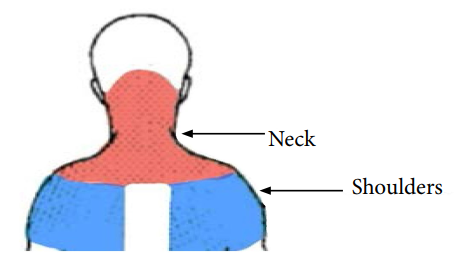PREVALENCE AND ASSOCIATED FACTORS OF NECK AND SHOULDER PAIN AMONG MEDICAL STUDENTS IN A MILITARY MEDICAL SCHOOL IN THAILAND
DOI:
https://doi.org/10.55374/jseamed.v8.221Keywords:
neck pain, shoulder pain, medical students, prevalence, associated factors, ThailandAbstract
Background: Medical students often face intense coursework and prolonged study hours, contributing to stress and potential neck and shoulder pain. The integration of technology in learning further increases this risk. Neck and shoulder pain (NSP) can decrease learning efficiency and well-being. Previous studies have reported varying prevalence rates globally, but specific data for Thai medical students are lacking.
Objectives: This study aimed to determine the prevalence and associated factors of NSP among medical students in Thailand.
Methods: A cross-sectional study was conducted among medical students at Phramongkutklao College of Medicine, Thailand, from December 2022 to November 2023. Data was collected using an online self-reported questionnaire adapted from the Nordic Musculoskeletal Questionnaire. The questionnaire included demographic data, neck and shoulder pain symptoms, pain intensity (Numeric Rating Scales - NRS), pain-related factors, and stress levels (Srithanya Stress Scale - ST-5).
Results: Of 500 medical students, 360 completed the questionnaire with a 72% response rate. The prevalence of significant NSP (NRS ≥ 4) was 38.33% (95% CI: 33.42%-43.43%). Multivariable analysis revealed significant associations between significant NSP and factors such as having experienced these symptoms in the past year (AOR: 7.73, 95% CI: 2.60-22.98), being female (AOR: 1.72, 95% CI: 1.06-2.77), adopting rounded shoulder and forward head postures (AOR: 2, 95% CI: 1.0 -3.80), and high-stress levels (ST-5 score ≥ 8) (AOR: 2.14, 95% CI: 1.27-3.59).
Conclusion: NSP is common among medical students, especially females. Key risk factors identified include a history of neck and shoulder pain, poor posture, and elevated stress levels. Medical schools are recommended to implement ergonomic interventions and stress management programs to reduce those risks.
Downloads
Metrics
References
Alshagga MA, Nimer AR, Yan LP, Ibrahim IA, Al-Ghamdi SS, Radman Al-Dubai SA. Prevalence and factors associated with neck, shoulder and low back pains among medical students in a Malaysian Medical College. BMC Res Notes 2013; 6: 244. DOI: https://doi.org/10.1186/1756-0500-6-244
Weleslassie GG, Meles HG, Haile TG, Hagos GK. Burden of neck pain among medical students in Ethiopia. BMC Musculoskelet Disord 2020; 21: 14. DOI: https://doi.org/10.1186/s12891-019-3018-x
Smith DR, Wei N, Ishitake T, Wang RS. Musculoskeletal disorders among Chinese medical students. Kurume Med J 2005;5 2: 139-46. DOI: https://doi.org/10.2739/kurumemedj.52.139
Smith DR, Sato M, Miyajima T, Mizutani T, Yamagata Z. Musculoskeletal disorders self-reported by female nursing students in central Japan: a complete cross-sectional survey. Int J Nurs Stud 2003; 40: 725-9. DOI: https://doi.org/10.1016/S0020-7489(03)00012-9
Smith DR, Choe MA, Chae YR, Jeong JS, Jeon MY, An GJ. Musculoskeletal symptoms among Korean nursing students. Contemp Nurse 2005; 19: 151-60. DOI: https://doi.org/10.5172/conu.19.1-2.151
Algarni AD, Al-Saran Y, Al-Moawi A, Bin Dous A, Al-Ahaideb A, Kachanathu SJ. The prevalence of and factors associated with neck, shoulder, and low-back pains among medical students at university hospitals in Central Saudi Arabia. Pain Res Treat 2017; 2017: 1235706. DOI: https://doi.org/10.1155/2017/1235706
Namwongsa S, Puntumetakul R, Neubert MS, Boucaut R. Factors associated with neck disorders among university student smartphone users. Work. 2018; 61: 367-78. DOI: https://doi.org/10.3233/WOR-182819
Silpakit O. Srithanya stress scale. J Ment Health Thai 2012; 16: 177-85.
Behera P, Majumdar A, Revadi G, Santoshi JA, Nagar V, Mishra N. Neck pain among undergraduate medical students in a premier institute of central India: A cross-sectional study of prevalence and associated factors. J Family Med Prim Care. 2020; 9: 3574-81. DOI: https://doi.org/10.4103/jfmpc.jfmpc_206_20
Haroon H, Mehmood S, Imtiaz F, Ali SA, Sarfraz M. Musculoskeletal pain and its associated risk factors among medical students of a public sector University in Karachi, Pakistan. J Pak Med Assoc. 2018; 68: 682-8.
Katz JN, Amick BC, Carroll BB, Hollis C, Fossel AH, Coley CM. Prevalence of upper extremity musculoskeletal disorders in college students. Am J Med 2000; 109: 586-8. DOI: https://doi.org/10.1016/S0002-9343(00)00538-6
Fillingim RB, King CD, Ribeiro-Dasilva MC, Rahim-Williams B, Riley JL, 3rd. Sex, gender, and pain: a review of recent clinical and experimental findings. J Pain 2009; 10: 447-85. DOI: https://doi.org/10.1016/j.jpain.2008.12.001
Delele M, Janakiraman B, Bekele Abebe A, Tafese A, van de Water ATM. Musculoskeletal pain and associated factors among Ethiopian elementary school children. BMC Musculoskelet Disord 2018; 19: 276. DOI: https://doi.org/10.1186/s12891-018-2192-6
McLean SM, May S, Moffett JK, Sharp DM, Gardiner E. Prognostic factors for progressive non-specific neck pain: a systematic review. Physical Therapy Reviews 2007; 12: 207-20. DOI: https://doi.org/10.1179/108331907X222967
Sepehri S, Sheikhhoseini R, Piri H, Sayyadi P. The effect of various therapeutic exercises on forward head posture, rounded shoulder, and hyperkyphosis among people with upper crossed syndrome: a systematic review and meta-analysis. BMC Musculoskelet Disord 2024; 25: 105. DOI: https://doi.org/10.1186/s12891-024-07224-4
Lin Y, Zhang X, Li H, Huang Y, Zhang W, Zhang C. Musculoskeletal pain is prevalent in Chinese medical and dental students: A cross-sectional study. Front Public Health 2022; 10: 1046466. DOI: https://doi.org/10.3389/fpubh.2022.1046466
Shah JP, Thaker N, Heimur J, Aredo JV, Sikdar S, Gerber L. Myofascial trigger points then and now: A Historical and Scientific Perspective. Pm r 2015; 7: 746-61. DOI: https://doi.org/10.1016/j.pmrj.2015.01.024
Jahre H, Grotle M, Smedbråten K, Dunn KM, Øiestad BE. Risk factors for non-specific neck pain in young adults. A systematic review. BMC Musculoskelet Disord 2020; 21: 366. DOI: https://doi.org/10.1186/s12891-020-03379-y

Downloads
Published
How to Cite
Issue
Section
License
Copyright (c) 2024 Journal of Southeast Asian Medical Research

This work is licensed under a Creative Commons Attribution-NonCommercial-NoDerivatives 4.0 International License.
The Journal of Southeast Asian Medical Research will hold the copyright to all published articles. The publisher's production department handles copyright forms once a manuscript is accepted and scheduled for publication.







